Why are the coffee beans of Yega Xuefei and Sidamo uneven in size, which means that there are many defective beans?
[Foreword]
Some time ago, fans told us: "Ethiopian beans are big and small, very uneven, high defect rate." I thought maybe we should figure out why Ethiopian beans are uneven in shape and what is called defective beans.
[Why are Ethiopian coffee beans always big and small?]
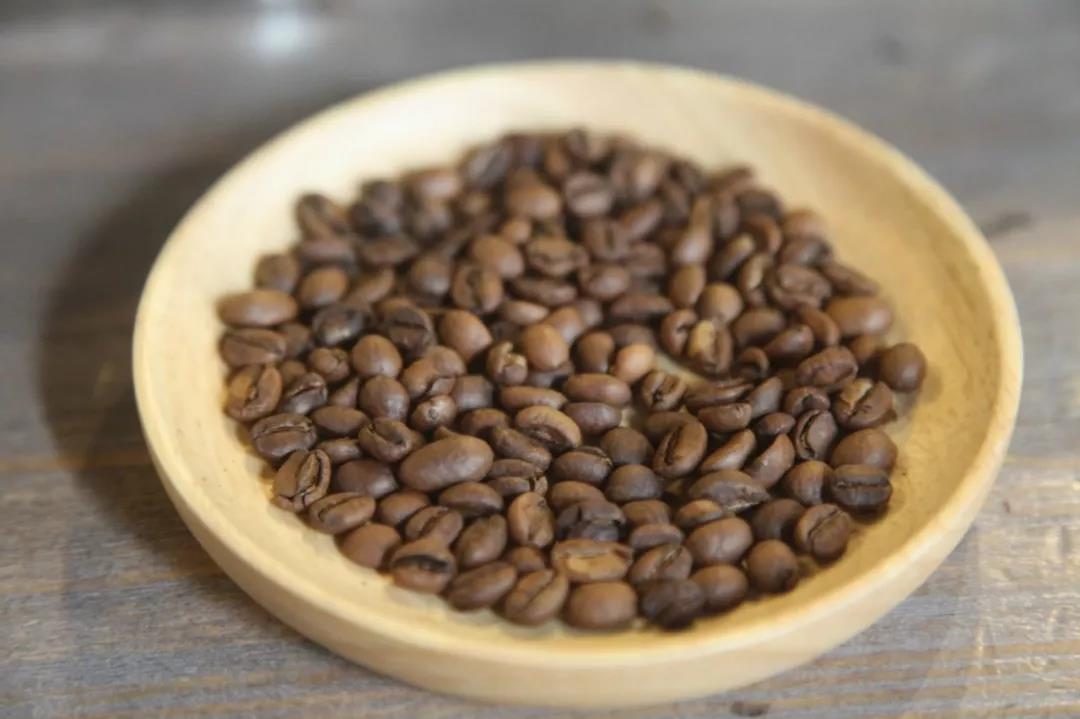
(Ethiopian coffee beans appear to vary in size, which is a result of Ethiopia's wide variety and concentrated processing.)
People who often drink Ethiopian coffee should have heard of this variety [Heirloom Native Species]. Most Ethiopian varieties will be named after this name. In fact, there are too many varieties in Ethiopia. It is like the natural gene bank of Arabica. On the one hand, there are many varieties and it is difficult to identify and classify them. On the other hand, the Ethiopian government is unwilling to disclose the information of these varieties for protection reasons, so they are collectively called [Heirloom Native Species].
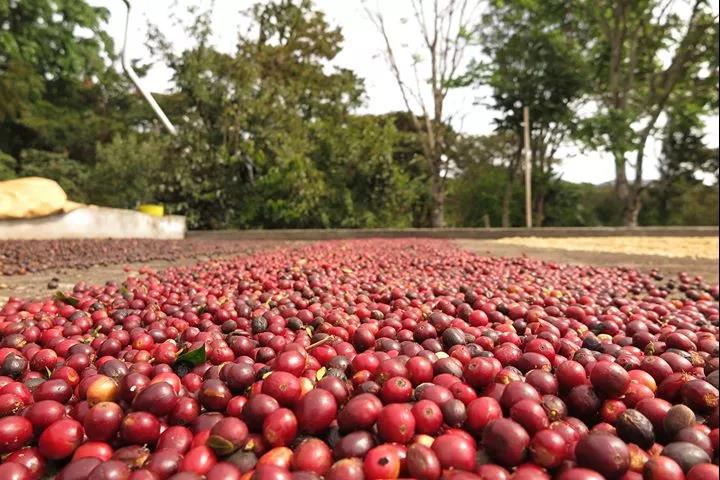
Let's first understand how coffee is grown in Ethiopia.
Generally, coffee farmers may grow several varieties at the same time, or they may select the better varieties for sale. In Ethiopia, in particular, coffee is mostly grown wild, semi-wild, in fields, backyards or under forests, and what coffee farmers harvest is actually a large platter of many different natural varieties.
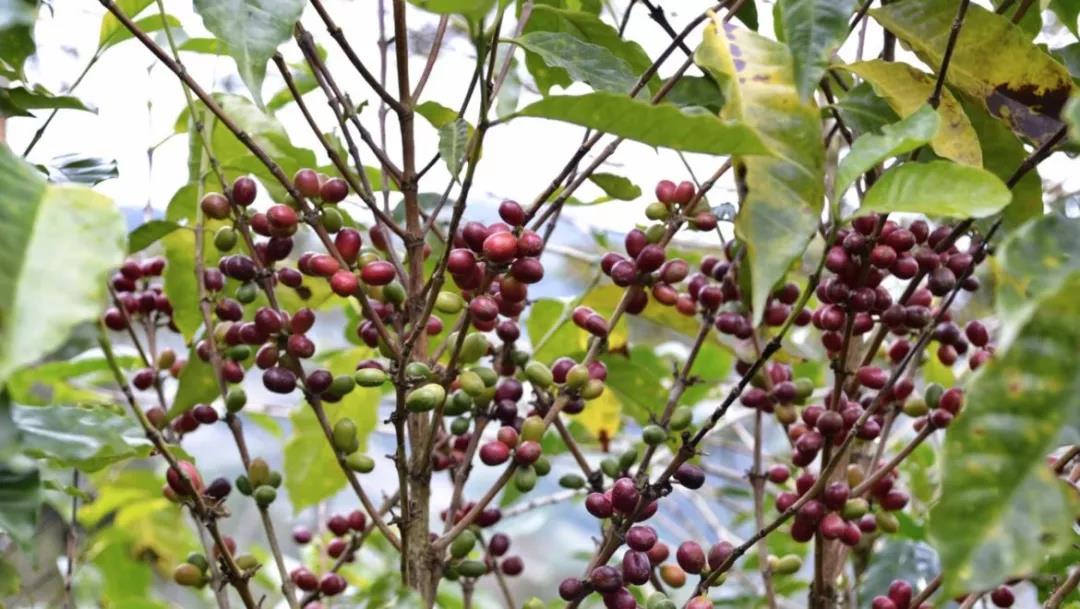
Wild coffee trees especially like to grow under forests. The tree species that can help coffee shade is called "Shade Tree, or Shadow Tree"; such planting method is called "Shade-grown Coffee". The advantage is that it can reduce the impact on the ecology, and the diversity of organisms will also help control pests and diseases. In some areas, coffee is shaded by local food crops such as bananas, which can be said to be both.
There are nearly 2000 coffee varieties recorded in Ethiopia, including 1927 native varieties and 128 introduced varieties. Therefore, if you look at the face value, Ethiopia's coffee variety is "Grand View Garden", which has everything, long, short, thin, fat...
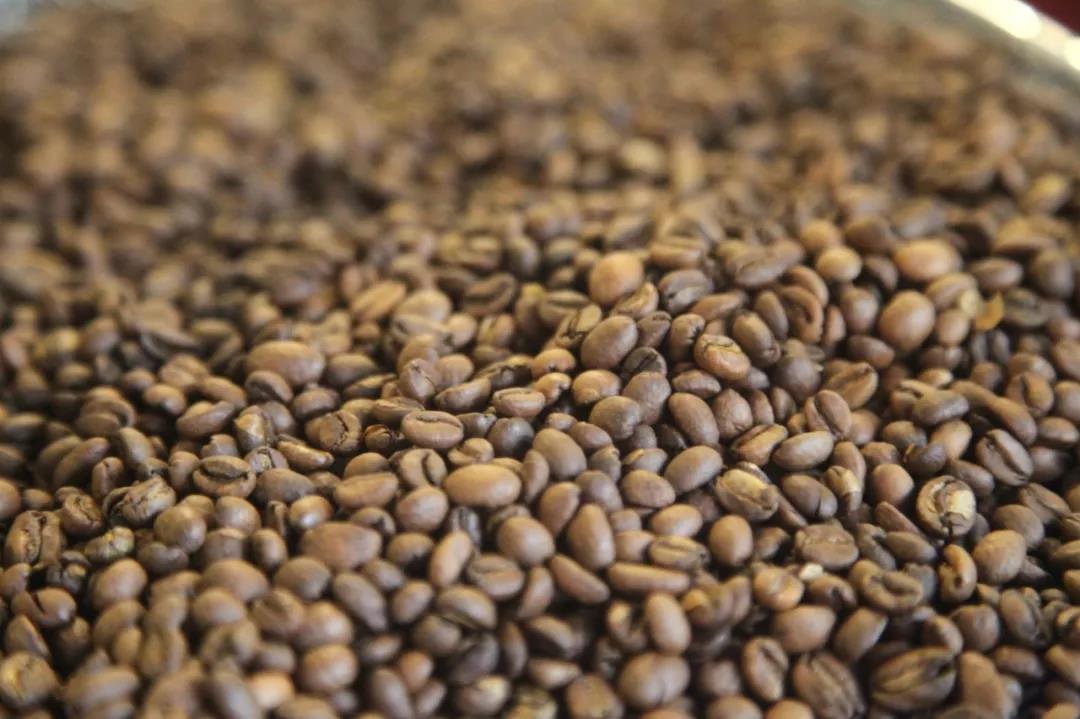
[Long particles] are found in coffee growing areas all over Ethiopia. From the actual proportion, Jimma in the west, including Limmu and Kaffa, will have more long particles, and Sidama or Yirgacheffe will have less proportion.
[Small particle species] The appearance is relatively round, the bean body is very small, mostly between 14-15 mesh, this variety should be the most familiar to us, in Sidama and Yejia Shefei often see their figure, I have also seen in a harrar sample, but also in Jimma local sales of coffee beans have seen, compared to other areas, Sidama and yigrachffe and surrounding arsi, guji have more of this small particle of the original variety planted.
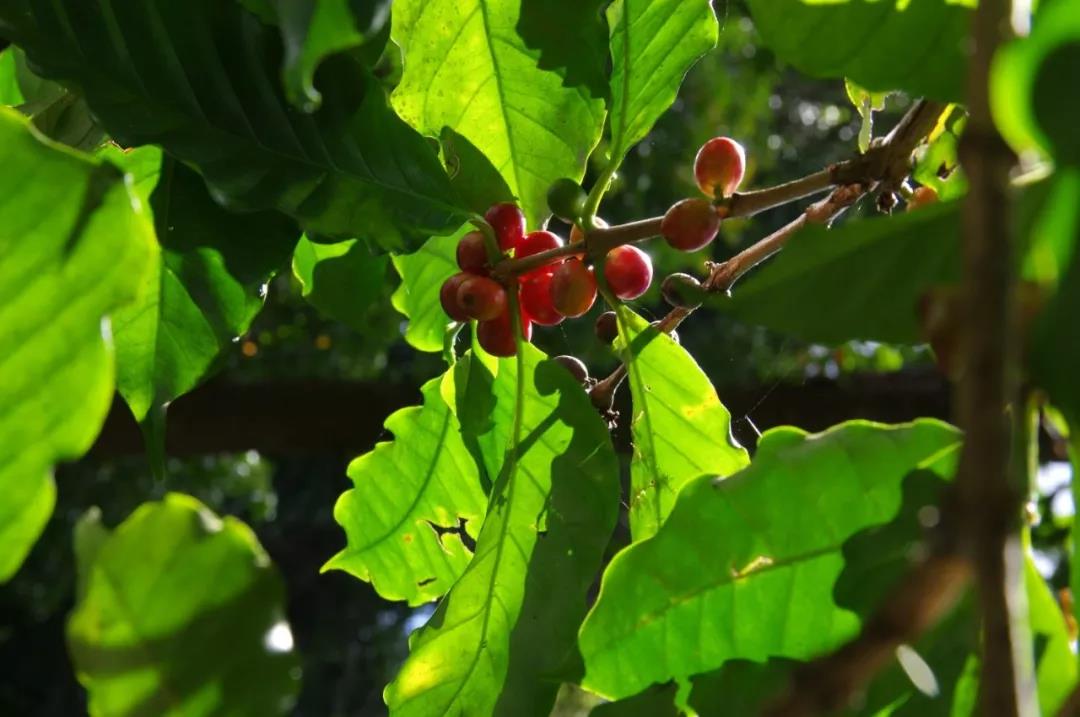
(In addition to the variety of coffee varieties, the way coffee is grown also affects the variety of Ethiopian coffee beans.)
Coffee cultivation in Ethiopia is divided into:
Forest coffee (8-10%), coffee trees coexist with other crops in the original forest, without any artificial care, farmers will regularly pick coffee fruit.
● Forest-semiforest coffee (30-35%), coffee tree planting area is located around the forest and farmers 'living area, coffee tree and forest coffee are the same natural production varieties, farmers will manage the coffee tree planting area and plant other cash crops.
● Garden coffee (50-55%), coffee trees are planted around farmers 'living areas, and most of them are coffee planted by farmers themselves.
Plantation coffee (5-6%), large private growers with more processing facilities and production capacity.
Most coffee cultivation in Sidamo and Yegashefi is based on the pastoral coffee model, in which coffee farmers grow their own coffee trees near their living areas and harvest them during harvest season, then send them to nearby water-dependent processing plants for centralized processing (or centralized acquisition by middlemen). Except for a small number of plantation estates that have the strength to plant, pick and process coffee beans independently, coffee beans from many different regions and varieties will be processed centrally by the processing plant and then sent to the auction house for official evaluation and grading. This is why many Ethiopian coffee beans are named after the processing plant or cooperative, and it is also one of the reasons why the same batch of coffee beans is mixed with multiple coffee varieties, and even the flavor of different batches of coffee beans produced by the same processing plant can be significantly different.
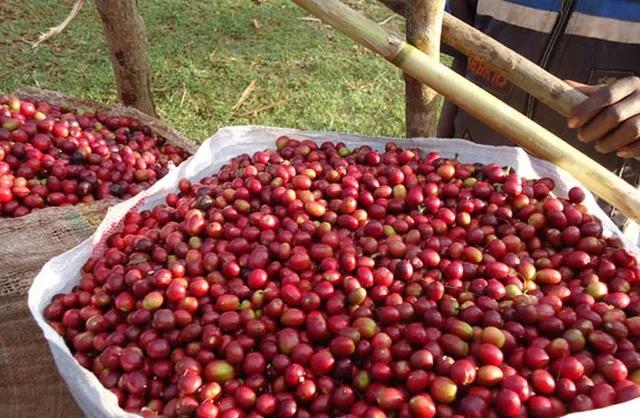
Let me mention the Ethiopian coffee classification system:
In the classification system of Ethiopian coffee, the classification system starting with G and divided into 5+1 grades is the most common (Z is a new grade that has just appeared in recent years). The smaller the number, the better. The main thing to see is the defect rate. Based on "the number of defective beans allowed per 300 grams of raw beans," the following is listed:
level
defect count
Z
0, Zero Defect, hard to find
G1
< 3 G2 4–12 G3 13–25 G4 26–45 G5 46–90 UG 排不进分级 埃塞俄比亚约在1970年代引进水洗处理,当时,水洗被视为较高级的方法,因为比较容易得到整齐的品质。因此,早年只有水洗排得进G1–G3,日晒则在G4–G5。不过,近年来,市场上涌现的日晒复兴浪潮,让排得进前三等级的日晒豆,也开始出现,并成为常态。 【那么瑕疵豆又是什么呢?】 咖啡生豆常混入杂质及不良豆,而这些不良豆也就是我们平常所说的“瑕疵豆”。
Green bean defect type
● Full Black
Characteristics: Whole or partial raw beans appear black opaque appearance.
Reasons for formation: blackening is caused by excessive fermentation, such as fermentation or odor, dusty smell, mildew and sour taste.
● Whole sour beans. Full sour.Partial Sour.
Characteristics: Beans are identified as sour beans when they are yellow-brown or reddish-brown.
Reasons for formation: sour beans are in the process of harvesting and processing, beans are fermented and contaminated by bacteria.
● Fungus Damage
◎ Features: Mildewed beans have yellow brown reddish brown dots at the early stage, indicating that they have been eroded by spores of bacteria.
Reasons for formation: Mildewed beans are usually caused by mold spores on beans, which are stored at a certain temperature and humidity after harvest, which will cause mold growth to infect beans.
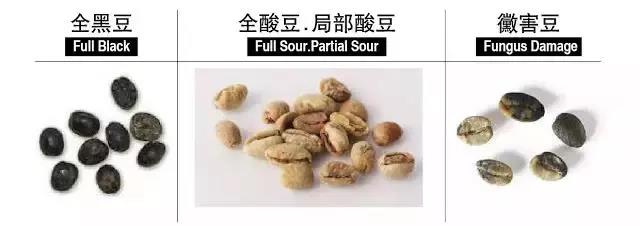
● Insect damage
Features: small black holes 0.3- 1.5 mm in diameter, usually on the inside of coffee beans.
Reasons for formation: pests are the most serious in coffee agriculture, when the fruit is still on the tree when the insects have been drilled into the fruit breeding.
● Brokenbean
Characteristics: Broken beans usually have a dark red area due to oxidation.
Causes: Cracked beans are usually cracked by incorrect calibration machines and excessive friction or extrusion when processing pulp or dry processing.
● Immature beans
Characteristics: Unripe beans can be distinguished by pale and yellow-green skin or white spots on the skin.
Reasons for formation: There are many reasons for incomplete maturity, improper harvesting of immature fruits and late ripening of berries at higher altitudes.
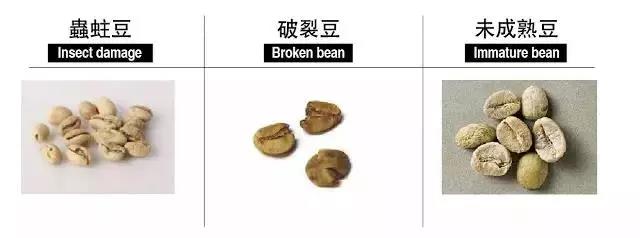
● Deformity beans
Features: Abnormal shape, slightly enlarged off-center incision.
Reasons: growth defects, physiological factors.
● Shell
Characteristics: Shell beans are formed by internal or external separation deformation at the same time.
* Cause of formation: mainly due to genetic variation.
● Floater
Characteristics: Floating beans are particularly white or discolored in appearance, while raw beans appear spotted.
Reasons for formation: For processing, this defect is caused by improper storage or drying, which usually leads to discoloration or low density of beans.
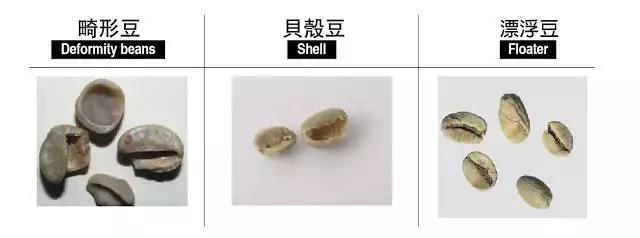
[Summary]
Because Ethiopia, like Brazil and Indonesia, is graded according to the defect rate of coffee beans, there will be obvious unevenness in coffee particles, especially after roasting, different coffee varieties have different degrees of roasting expansion, which further enlarges the difference between coffee beans particles. However, it is precisely because of this that the layering and richness of coffee are more obvious.
Important Notice :
前街咖啡 FrontStreet Coffee has moved to new addredd:
FrontStreet Coffee Address: 315,Donghua East Road,GuangZhou
Tel:020 38364473
- Prev
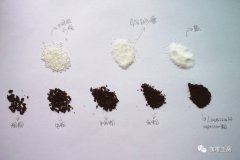
Degree of grinding | how fine powder is used to make coffee by hand? Small Fuji coarse powder medium powder fine powder very fine powder
Professional coffee knowledge exchange more information about coffee beans Please pay attention to the thickness of coffee powder in coffee workshop (Wechat official account cafe_style), which is related to the amount and speed of coffee ingredient release when brewing coffee. Generally speaking, the thickness of coffee powder can be divided into five grades: coarse powder, medium powder, medium powder, fine powder and very fine powder.
- Next

What is Macchiato? how do you drink Starbucks caramel? how does Macchiato make it?
Professional coffee knowledge exchange more coffee bean information please follow the coffee workshop (Wechat official account cafe_style) fancy coffee what is fancy coffee? Espresso? The so-called fancy coffee refers to the addition of various seasonings to espresso in different proportions, often used as the basis for coffee drinks mixed with other ingredients (such as milk or cocoa).
Related
- Beginners will see the "Coffee pull flower" guide!
- What is the difference between ice blog purified milk and ordinary milk coffee?
- Why is the Philippines the largest producer of crops in Liberia?
- For coffee extraction, should the fine powder be retained?
- How does extracted espresso fill pressed powder? How much strength does it take to press the powder?
- How to make jasmine cold extract coffee? Is the jasmine + latte good?
- Will this little toy really make the coffee taste better? How does Lily Drip affect coffee extraction?
- Will the action of slapping the filter cup also affect coffee extraction?
- What's the difference between powder-to-water ratio and powder-to-liquid ratio?
- What is the Ethiopian local species? What does it have to do with Heirloom native species?

